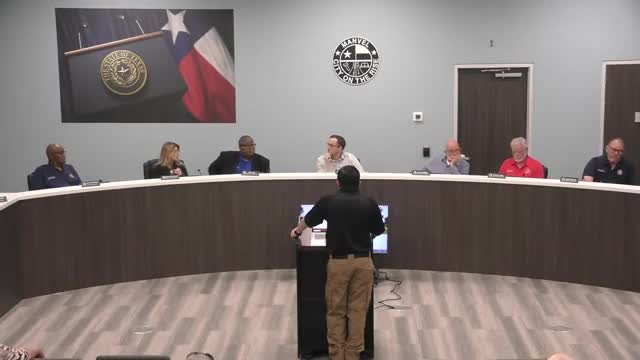Frustration mounts over 45 days of kennel neglect
July 01, 2024 | Manvel, Brazoria County, Texas

This article was created by AI summarizing key points discussed. AI makes mistakes, so for full details and context, please refer to the video of the full meeting. Please report any errors so we can fix them. Report an error »

During a recent government meeting, officials expressed growing frustration over the prolonged stay of a black dog in a local kennel, which has been there for over 45 days. The discussion highlighted concerns about the management of animal rescues and fostering processes, particularly regarding the prioritization of animals for adoption.
A council member questioned why other dogs were being adopted while this particular dog remained in the kennel. The response indicated that preferences for specific breeds or temperaments often influenced which dogs were chosen by fosters and rescues. This led to a suggestion that perhaps a policy should be implemented to prioritize older dogs for adoption, although some officials cautioned that such a requirement could complicate the process further.
Cynthia Cortinez, who manages the local foster network, clarified that they had taken in every animal they could since January, but the lack of available fosters for the black dog was a significant barrier. She noted that while they had a rescue willing to take the dog, it needed to be tested for heartworm first—a test that had not yet been conducted due to procedural delays.
The meeting revealed a disconnect between the animal control department and the fostering network, with officials expressing a need for better communication and coordination. The mayor emphasized the urgency of resolving these issues, stating that the current situation was inhumane for the animals involved and that a more collaborative approach was necessary to ensure that all dogs receive timely care and placement.
As the meeting concluded, there was a consensus on the need for immediate action to test the dog and explore fostering options, with a commitment to improve the overall process for animal rescue in the community.
A council member questioned why other dogs were being adopted while this particular dog remained in the kennel. The response indicated that preferences for specific breeds or temperaments often influenced which dogs were chosen by fosters and rescues. This led to a suggestion that perhaps a policy should be implemented to prioritize older dogs for adoption, although some officials cautioned that such a requirement could complicate the process further.
Cynthia Cortinez, who manages the local foster network, clarified that they had taken in every animal they could since January, but the lack of available fosters for the black dog was a significant barrier. She noted that while they had a rescue willing to take the dog, it needed to be tested for heartworm first—a test that had not yet been conducted due to procedural delays.
The meeting revealed a disconnect between the animal control department and the fostering network, with officials expressing a need for better communication and coordination. The mayor emphasized the urgency of resolving these issues, stating that the current situation was inhumane for the animals involved and that a more collaborative approach was necessary to ensure that all dogs receive timely care and placement.
As the meeting concluded, there was a consensus on the need for immediate action to test the dog and explore fostering options, with a commitment to improve the overall process for animal rescue in the community.
View full meeting
This article is based on a recent meeting—watch the full video and explore the complete transcript for deeper insights into the discussion.
View full meeting
